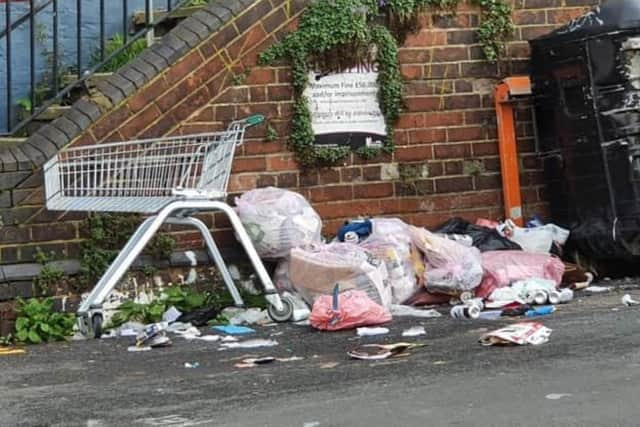Hastings fly-tipping incidents rise by more than 170 per cent in last year
and live on Freeview channel 276
The data shows that in the 2021/22 period, the number of cases in the borough was 574 but in the same period in 2022/23, there were 1,555 incidents, a rise of 170.9 per cent.
This was in complete contrast to the Rother area, which saw cases fall, according to the latest figures.
Advertisement
Hide AdAdvertisement
Hide AdIn 2021/22, the number of fly-tipping incidents in Rother was 928. In 2022/23, the figure had dropped to 890, a decrease of -4.1 per cent.


The figures from Defra, which were released last week, show that there were more than a million incidents of fly-tipping on public land in the last year and more than 100,000 in the South East alone.
Councils in England dealt with 1.08 million fly-tipping incidents in 2022/2023, though these figures only account for waste illegally dumped on public land that has been reported to the authorities.
Representing around 27,000 rural businesses across England and Wales, the Country Land & Business Association (CLA) believes these figures only tell a fraction of the story.
Advertisement
Hide AdAdvertisement
Hide AdCLA South East represents thousands of farmers, landowners and rural businesses in Kent, Hampshire, Surrey, Sussex, Berkshire, Buckinghamshire, Oxfordshire and the Isle of Wight.
Tim Bamford, regional director said: “These fly-tipping figures barely scratch the surface of a crime that’s blighting rural communities, with incidents on private land going unrecorded on a mass scale.
"Farmers and landowners bear the cost of removing rubbish and they pay on average £1,000 to remove waste. This is not a victimless crime - in some cases they have paid up to £100,000 to clear up other people’s mess or risk facing prosecution themselves.
“It’s not just litter blotting the landscape, but tonnes of household and commercial waste which can often be hazardous, even including asbestos and chemicals, endangering farmers, wildlife, livestock, crops and the environment.
Advertisement
Hide AdAdvertisement
Hide Ad“While courts can sentence offenders to prison or unlimited fines, prosecutions are rare and criminals clearly do not fear the system. We are calling for local authorities to help clear fly-tipping incidents on private as well as public land, while the various enforcement agencies must be properly trained and resourced.
“Without more progress farmers, not the criminals, will continue to pay the price.”
A Hastings Borough Council spokesperson said: “The number of reported fly-tips fluctuates from year to year, with 21/22 representing the lowest number on record. While there are numerous reason for this variation, the biggest contribution comes from the number of proactive reports, particularly from volunteer community clearance groups.
“During and just after the Covid-19 pandemic, the number of reported fly-tips the council saw dropped. As activities went back to normal, the figures have returned to roughly want they were pre-pandemic.
“We encourage all residents to report fly tipping to us so we can collect it as soon as possible. This can be reported quickly and easily through the My Hastings service.”